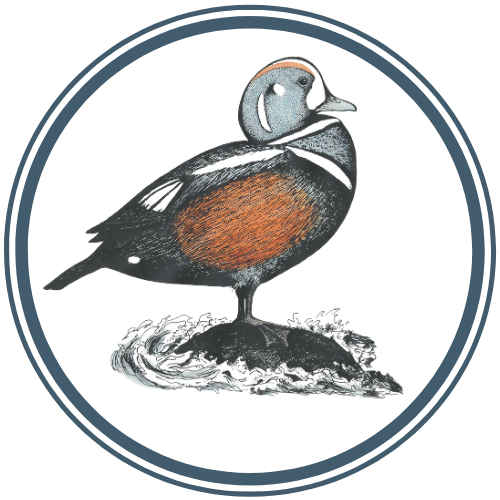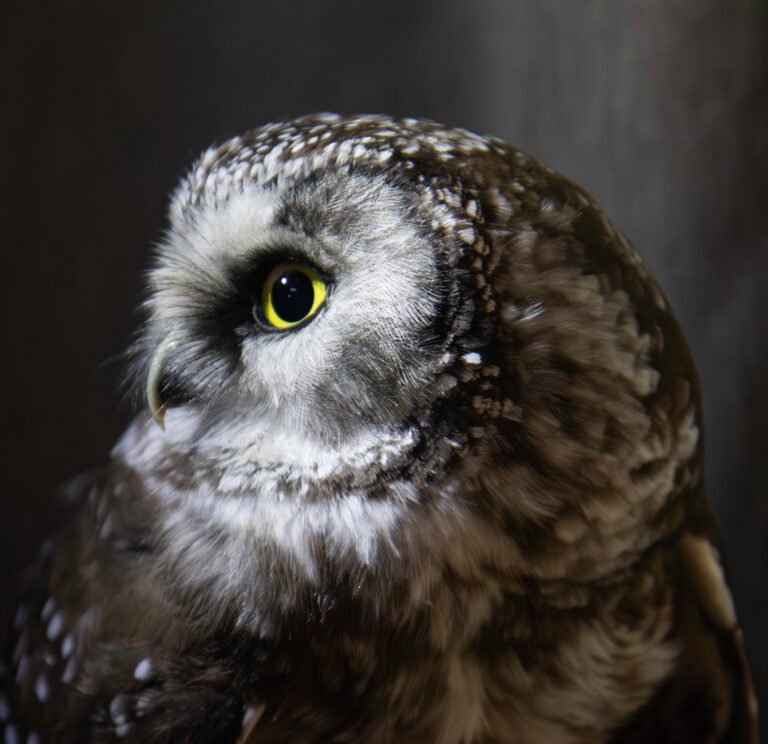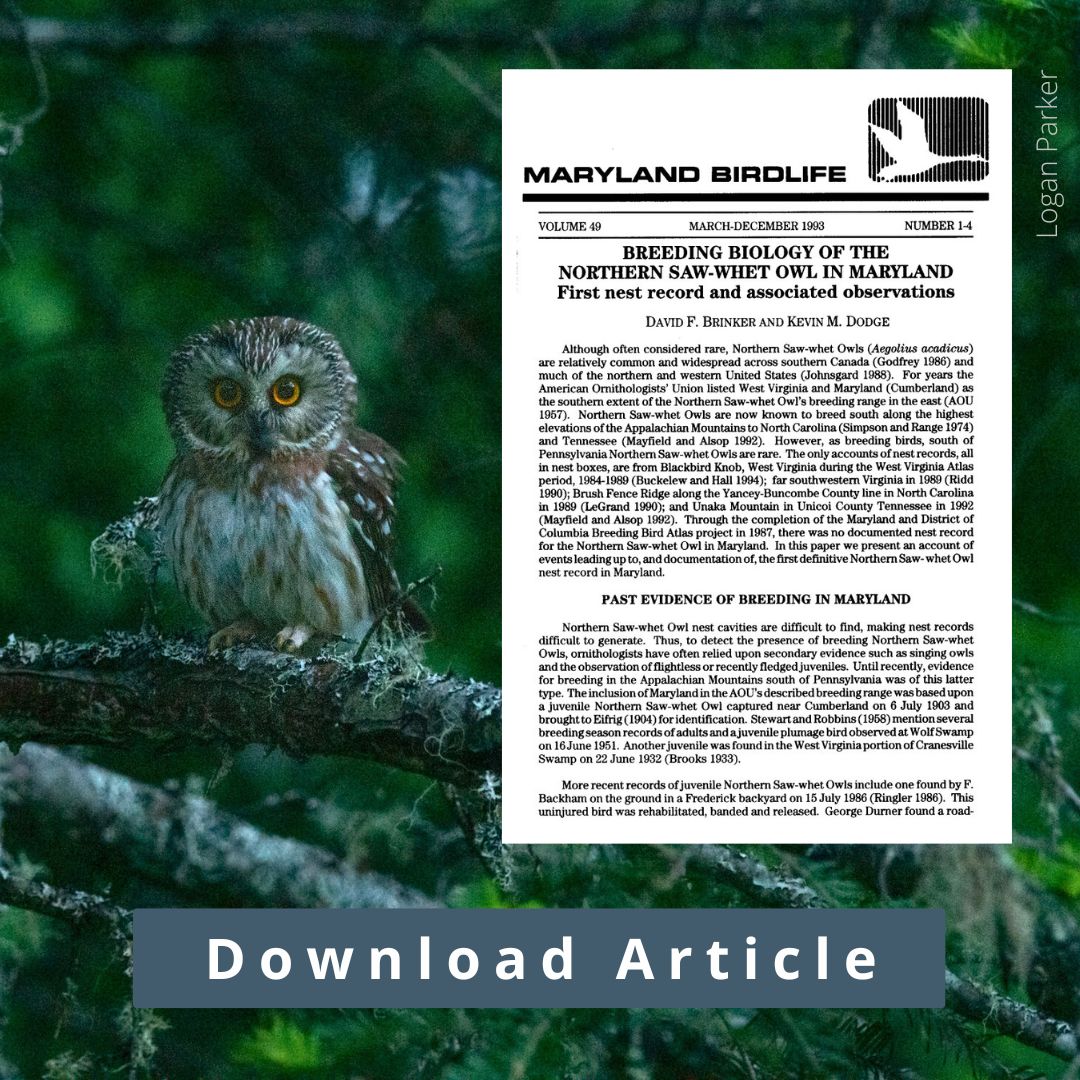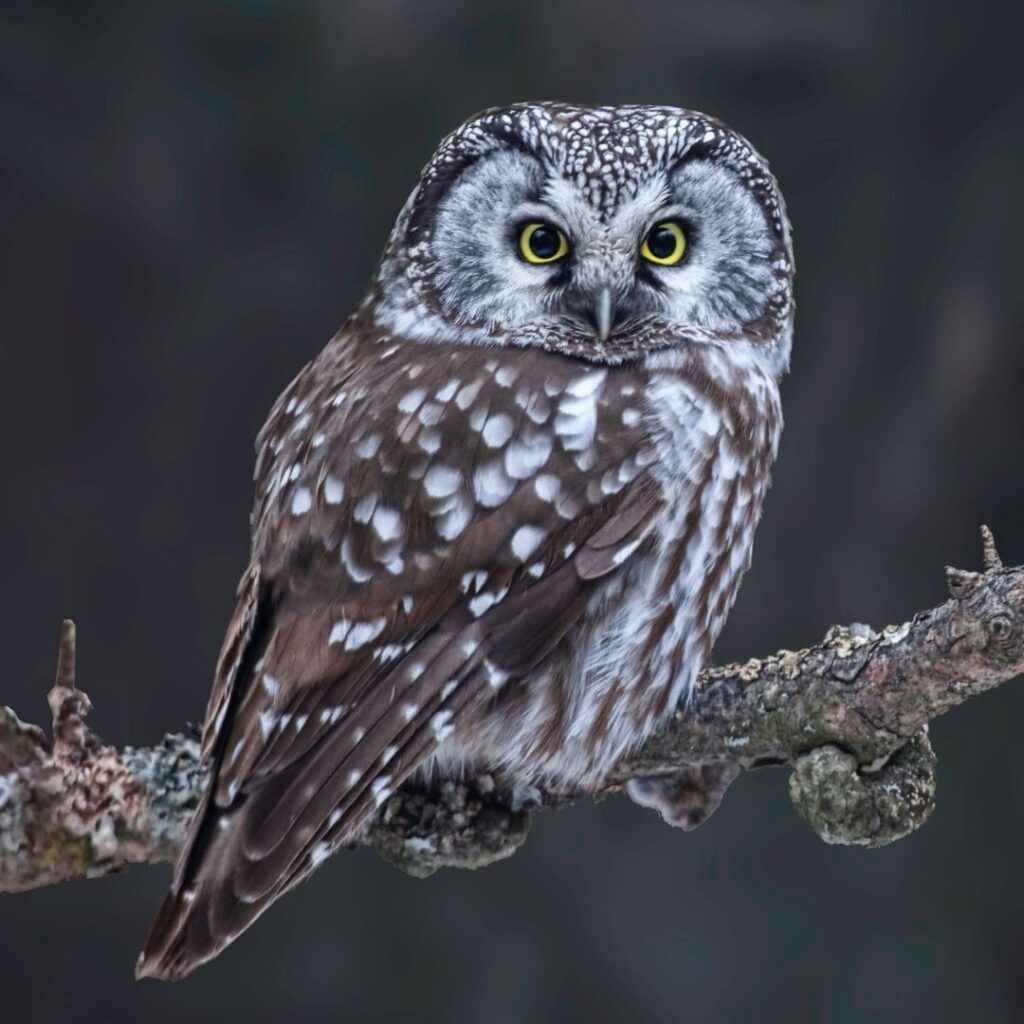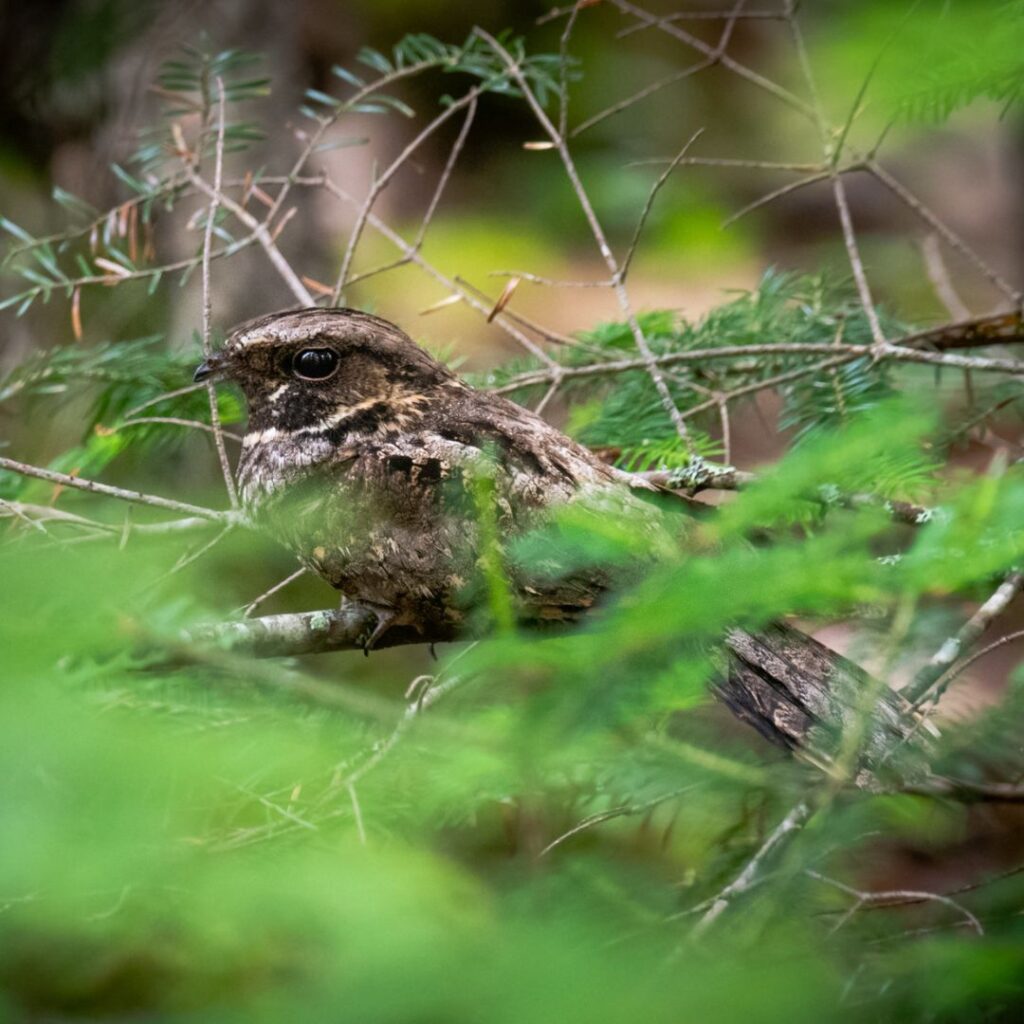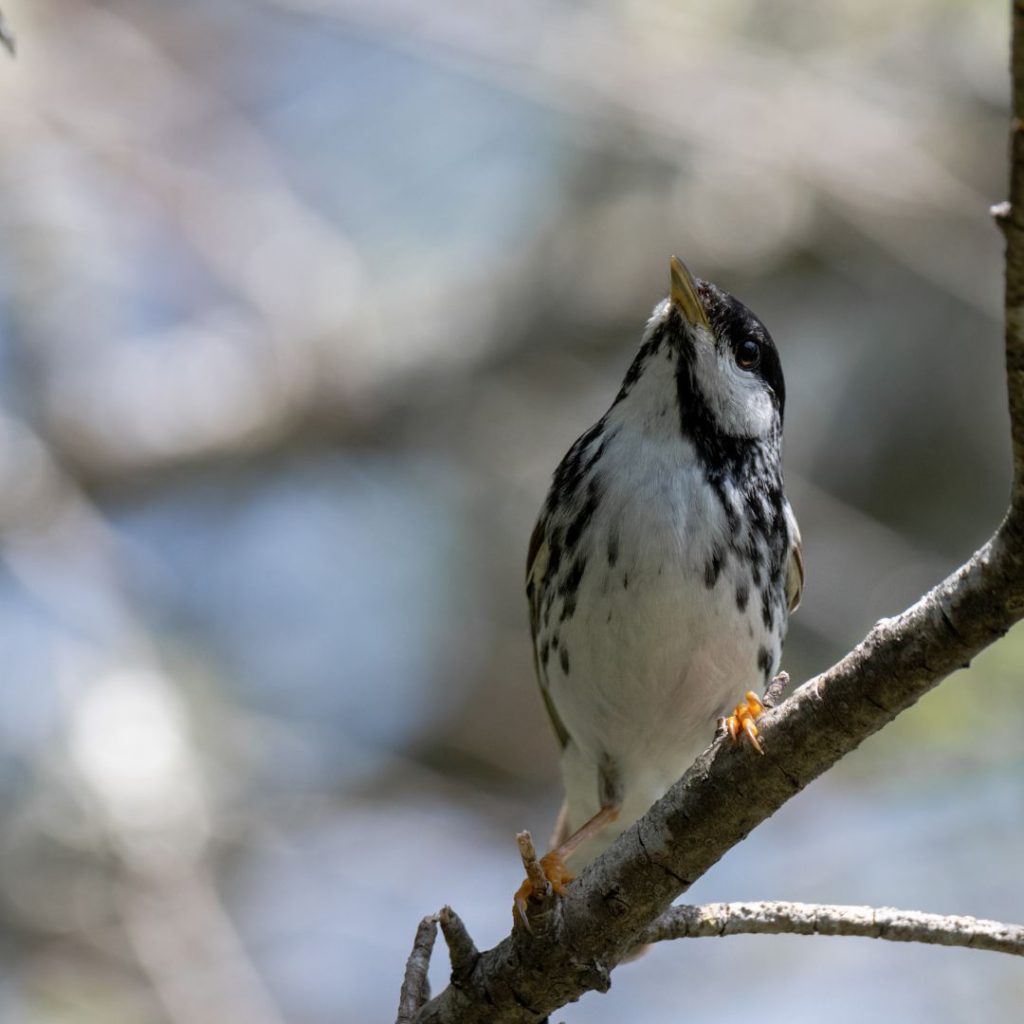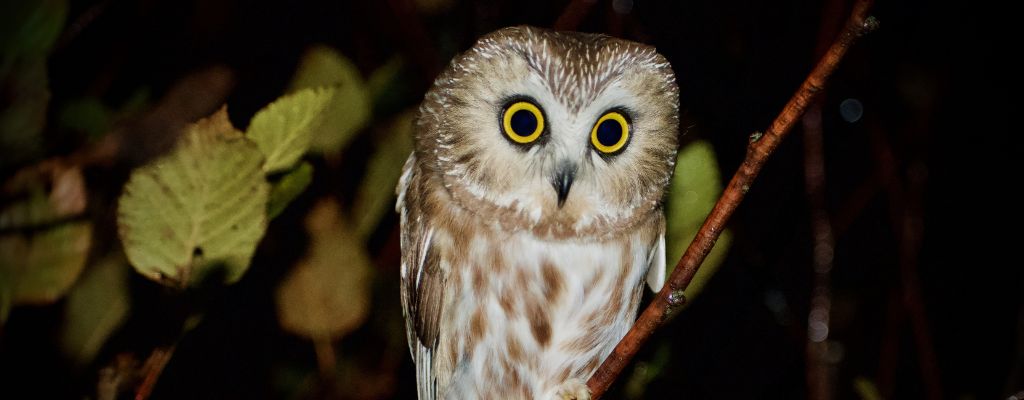

Saw-whet Owl GPS Tag Fundraiser was a Success!
We exceeded our spring fundraising goal! Thanks to your generous support, the GPS tags will be deployed this year. Stay tuned! We will share live updates of the owls’ locations on the MNHO website, allowing you to follow their journey in real-time.
MNHO works in partnership with Project Owlnet to run the Petit Manan Point Owl Monitoring Station on Maine Coastal Islands National Wildlife Refuge in Steuben, Maine and research Northern Saw-whet Owls and other owl species.
- Since 2015: Thousands of owls have been documented at the station during fall migration. These are mostly Northern Saw-whet Owls but also include the occasional Long-eared Owl and the rare Boreal Owl.
- Since 2024: Saw-whets have been equipped with tiny nanotags at the station to track their movements in Maine and beyond. Check out their migration routes on our Saw-whet Owl Migration Map.
- Coming in 2026: Flicker ULP GPS tags will be deployed on owls to fill remaining gaps in the data. Learn more here.
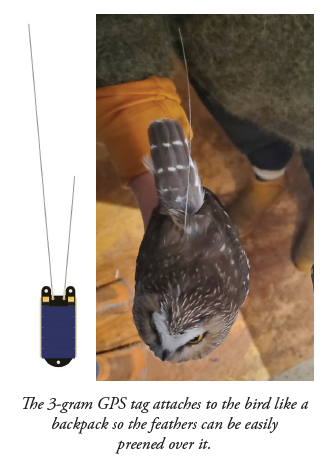
What’s Next
Until now, the Northern Saw-whet Owl Migratory Connectivity Project has primarily used VHF nanotags to track Saw-whets through the Motus network of receiver stations along the Eastern Seaboard. While this system has provided valuable insights, owls must pass within approximately 15 km of a Motus receiver to be picked up, leaving gaps in the data when Saw-whets migrate through areas with sparse receiver coverage. Once they reach their remote boreal breeding grounds, they can remain undetected for months if they do not pass near a Motus antenna. To fully understand their migration routes and habitat use, we need a technology that can track their movements beyond the reach of receiver stations.
To bridge these gaps, we plan to integrate Flicker ULP GPS tags from Cellular Tracking Technologies into our research in 2026. These cutting-edge tags transmit daily location data, even in the most remote regions, allowing us to track individual owls with unprecedented accuracy.
With just a few of these GPS tags, we will:
- Track Northern Saw-whet Owl movements in real time for at least one year.
- Gain new insights into the size of their home ranges, the timing of their migration and their fidelity to breeding and wintering sites.
- Transform our understanding of Saw-whet Owl migration and help guide conservation efforts for this elusive species.
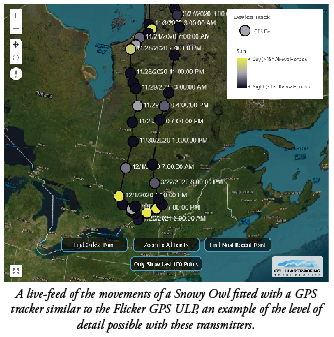
Project Supporters
The Baird Foundation
David F. Brinker
Downeast Audubon
Keefer Irwin
Latest
Project Updates
Stay Connected
Follow the progress of this project through our newsletter or on social media
Interactive Maps
The maps below display a subset of the owls fitted with nanotags at the Petit Manan station and their subsequent movements during fall and spring migration.
- Owls must fly within roughly 15 km of an antenna station to be detected. Because of this, it is likely the owls are making stops and detours that were not detected.
- A nanotag’s battery life is approximately 2 years giving us the opportunity to reveal insights into migratory route fidelity (whether individuals repeat migration pathways season-to-season and year-to-year).
- False detections (a.k.a. false positives) are a frequent occurrence in radio tracking. Although the most obvious false detections are automatically filtered out, the maps below may still contain some false positives.
Motus data is collected and automatically uploaded to the Motus servers and becomes publicly visible, usually, within 24 hours of detection. We update the maps below roughly once per week during migration season. Learn more about the Motus network here.
Notable Observations
Red Pins: Owls banded elsewhere that were observed at the Petit Manan Point station.
Green Pins: Owls banded at the station that were observed elsewhere before 31 December.
Yellow Pins: Owls banded at the station that were observed elsewhere often more than a year later.
Why Study Northern Saw-whet Owls?
Because they are nocturnal and rarely vocalize outside of the breeding season, Northern Saw-whet Owls have long been under-studied. Dedicated research is needed to uncover basic information about their behavior and movements. For example, Maine Bird Atlas volunteers recently found several Saw-whets in Maine in mid-February, and experts don’t know if these birds were early spring migrants traveling North or if Saw-whets sometimes overwinter in Maine.
Saw-whet research is also critical for conservation and forest management, as these small owls rely on boreal and northern hardwood forests—key areas targeted for timber harvesting.
Saw-whets appear to be declining globally but more research is needed to understand the extent and causes of these population changes.
Project Details
The Northern Saw-whet Owl Migratory Connectivity Project unites leading and emerging owl researchers to study the movement patterns of Northern Saw-whet Owls.
The Petit Manan Owl Monitoring Station is a collaborative effort of Project Owlnet and Maine Natural History Observatory. The station is on the Maine Coastal Islands National Wildlife Refuge in Steuben, Maine. David Brinker is the principal investigator. This station is one of many along the Eastern seaboard that tracks owls during fall migration. Project Owlnet has been facilitating communication, cooperation, and innovation among owl migration researchers in North America and beyond since 1994.
Volunteer
Send us an email at info@mainenaturalhistory.org If you are interested in volunteering at the station. Volunteers need to be willing to travel, stay up late, and commit to a regular schedule of volunteering during the month of October. We supply the owls – you supply the enthusiasm!
Learn More
Want to learn more about Maine owls? Check out the webinar by Observatory Ecologist, Logan Parker, on owl monitoring in Maine.
Brinker, David F., and Kevin M. Dodge. “Breeding Biology of the Northern Saw-Whet Owl in Maryland: First Nest Record and Associated Observations.” Maryland Birdlife , Maryland Ornithological Society, vol 49, no. 1-4, 1993, pp. 3-15
Related Content
-

Boreal Habitat Owl Surveys
Owls are among the most charismatic and recognizable orders of birds in the world, yet their secretive life histories,…
-

Nightjar Monitoring
Maine’s Eastern Whip-poor-wills and Common Nighthawks have undergone significant declines in recent years and MNHO is partnering with Maine…
-

Coastal Songbirds
Maine’s small islands—particularly those along the Downeast coast—may act as important refuge from climate change for boreal bird species…
